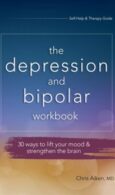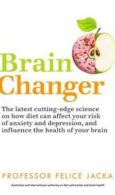How Your Body Changes Your Brain: Start Moving Now!

How your body changes your brain
By Sarah Berry
We can have the sense that an experience changes us, and in his last New York Times best-selling book, Dr Norman Doidge explored how our experiences actually change our brains.
The science of neuroplasticity – the understanding that our brains can rewire themselves in response to our experiences and actions – has turned on its head the notion we’ve held for hundreds of years; that the brain is hardwired; a computer that operates from the command centre in our heads controlling our limbs and bodily functions.
In his latest book, Doidge explores the latest developments in neuroplasticity, namely the way the body also controls and can change the brain.
“The brain is always embodied, and our subjective experience always has a bodily component, just as all so-called bodily experiences have a mental component,” Doidge explains in The Brain’s Way of Healing.
Take, for example, John Pepper, whose diagnosis of Parkinson’s disease in his 30s, meant he struggled with the sorts of movements – like walking – that he previously took for granted. He took them for granted because the sorts of automatic movements that we do without having to think much – like walking – are controlled by a part of the brain called the basal ganglia, the very same part that becomes damaged by Parkinson’s disease. Pepper thought that given Parkinson’s is a movement disorder, maybe he could affect the disorder through movement. So he began taking slow, conscious walks concentrating on each subtle movement of his body as he moved. Doing this began to activate different parts of the brain, associated with learning, and in doing so he managed to create new pathways to walk and bypass the basal ganglia. Now, in his 70s, he moves so quickly and smoothly, you would never know Pepper had Parkinson’s, Doidge says.
“He was using his prefrontal lobes to do those activities taking over for the basal ganglia which can only do automatic activities,” explains Doidge. “The basal ganglia was not rewired – he learned to work around it.” The idea that many brain problems – from MS to Parkinson’s, strokes to autism, ADD and dementia – thought to be incurable or irreversible can be improved has offered hope to millions around the world.
But, the latest science offers new ways for us all to understand health and the extent to which our bodies – and what we do with them – affect our brains.
Vigorous Exercise
“The data is overwhelming that exercise does at least two things to the brain,” says Doidge over the phone, “one, that it triggers these growth factors that are kind of like fertiliser for the brain cells to enhance connections between them – one of them one called Brain Derived Neurotrophic Factor (BDNF), another is glial derived neurotrophic factor which supports the infrastructure of the brain cells and that enhances health.”
The other thing is that exercise also reduces our risk of Parkinson’s and dementia, among other diseases, as one recent study found.
In a separate long-term study, exercise was the number one behaviour that affected cognitive health.
“Exercise (defined as vigorous exercise, or walking at least 3 kilometres a day, or biking 16 kilometres a day)… was the most powerful contributor to decreased risk of both general cognitive decline and dementia,” Doidge writes of the study, adding:
“Research on human beings now suggests that a combination of learning and exercise can help maintain brain plasticity and even increase it, because learning turns on genes that express more BDNF, and BDNF facilitates learning.”
Walking
Humble old walking is big news for your brain health.
“As people reach middle age, and the brain begins to degenerate, exercise is more, not less, important, and one of the few ways to offset this process,” Doidge says. “Understanding this is more crucial than ever, because so many people live sedentary lives, in front of computer screens, sitting most of the day. Numerous studies show that a sedentary lifestyle is a significant risk factor not only for heart disease but also for cancer, diabetes, and neurodegenerative illness. If there’s a panacea in medicine, it’s walking.”
I ask him what is so special about walking.
“There might be something special about walking in that walking is something that organises the nervous system – you know, we evolved to walk,” Doidge explains. “I could get you to walk in funny ways… you would be terribly disorganised neurologically. If I threw you a ball or asked you to do some fine motor skill you would be out of sorts and then if I got you to walk normally again it would reorganise you.”
He adds:
“There is something with coordinating hemispheres… there is something about walking from an evolutionary point of view – the times that mammals do long walks occur when they have run out of food in their environment or there is a predator in town, so they have to skedaddle and go very far into a new, unexplored territory where they’re going to have to do a lot of learning and that triggers the growth of new brain cells and of course a lot of these growth factors.”
Eastern Practices Including Tai Chi, Yoga and Meditation
“One of the things that happened in the course of writing the book,” Doidge explains, “I found that over and over the issue of energy was being used (by well-respected neuroplasticians) to stimulate the brain.”
“It was very clear to me that the genius of western science has been that it’s analytical, breaks things down into parts and it has discussed the brain in terms of its parts and, in the 19th and 20th century, its great triumph has been to show that the brain is made up of – in a way – hundreds of little organs that each, often do different things but they believed that it was like a hard-wired computer with different modules in it. On the other hand, eastern medicine had much more to say about mind, brain and body wholeness.”
In the sense that it does not compartmentalise body, mind and brain, the holistic eastern approach to healing is a perfect fit with neuroplasticity. Often, the exercises in eastern practices also help to relax the body, which is crucial for cognitive good health.
“In rest periods we normally get a lot of cell repair,” says Doidge, who practices Tai Chi. “During sleep we consolidate the changes between our neurons that have occurred from learning. With these techniques we learn to turn on that relaxation system and that’s just absolutely crucial. When you’re constantly on the go and constantly battered by the stimulation around you and the cortisol is being fired – if it’s a sometimes thing, that’s fine, but if it’s chronic, as it is in many jobs, you get deterioration of overall body function.”
Moments of stillness and cultivating awareness and relaxation are times, Doidge adds, when our brains are “harmonising, re-tuning, resetting”.
Positive Thinking
If we can rewire our brain through habit, can we think our way into good health and happiness?
“At the simplest level, thinking changes the brain,” Doidge explains. “As we think various different kinds of things, we make new circuits or we turn existing circuits into kinds of tracks or mind habits.”
Despite this, he says, a trend towards positive thinking or affirmations is simplistic.
“At times it is true that people can get into ruts… when they just focus on their weaknesses but the solution is not just to focus on the positives. Clearly you want to build on strength but sometimes people are doing things that are getting in their own way and that requires some analysis of that pattern.
“I don’t think I’ve met a person trying to figure out… how they can flourish in a world where suffering is not simply an aberration, but something we all have to face… I think if affirmations in and of themselves were sufficient to get us over that, we’d all know that now… affirmations can us at times shift states and the theory is that if you shift the state long enough it becomes a trait. But the problem is if you’re burying or covering over some deep unresolved conflict or feeling or state…I don’t think any number of affirmations is going to help.”
Your Body and Brain Aren’t Enemies
Our bodies are friends of our brains and can help us find good health.
“Only in anatomy textbooks is a brain separate from the body,” Doidge says. “In terms of its functioning, it is seamlessly connected to the body by the peripheral nervous system and to the world through the senses.
“And the model we’ve had of the brain in recent years has been that because the brain controls a lot of the bodies functions, we start to think of the body as merely infrastructure for the brain as though the body evolved to serve the brain and that is crazy and the exact opposite of what happened.
“Our bodies evolved long before brains did… and they evolved to help bodies coordinate and move… And it turns out one of the best things you can do for your brain is exercise your body.”








